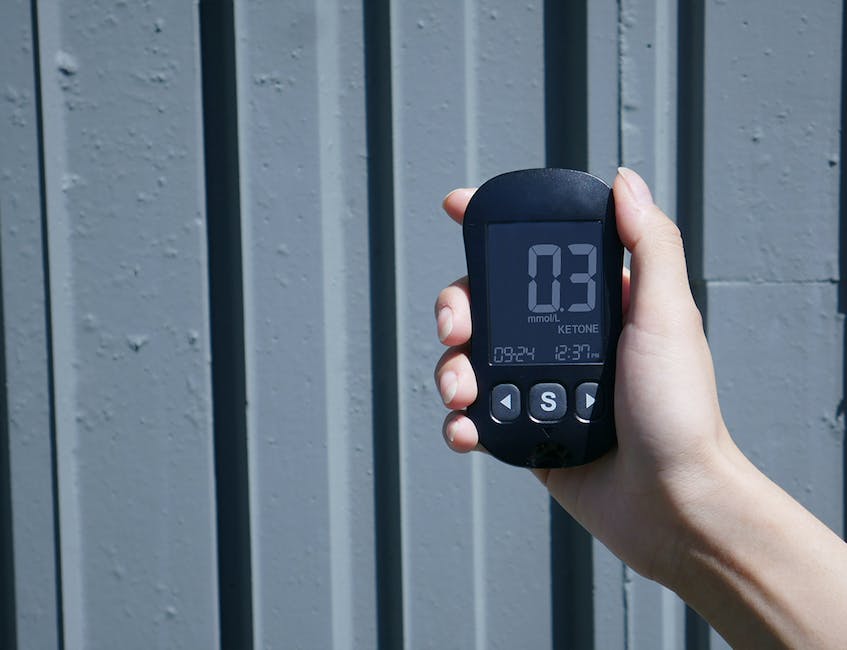Are you looking for an easy and reliable way to measure your ketone levels? Ketone testing strips are the answer. This guide provides a comprehensive overview of what ketone strips are, how to use them, and other important considerations when it comes to monitoring your body’s output of ketones. Read on to learn how you can effectively and accurately keep track of your ketone levels with testing strips.
1. The Basics of Ketone Testing
Testing ketones is an essential part of the ketogenic diet. Monitoring ketone levels is a way to determine if you’re following the diet correctly and whether you’re achieving the desired metabolic state. Although it may seem intimidating at first, testing is relatively simple and only requires some minor preparation and a few inexpensive tools.
- The first step is to purchase test strips or a blood ketone meter.
- Once you’ve obtained the necessary instrument, you need to collect a urine or blood sample. To do this for urine, simply dip the test strip into a clean cup of the sample and wait for the color to register. For a blood sample, use your blood ketone meter.
- After that, the strips will display levels of ketones in your body. Different test strips will have different color-coded results, so it’s important to use the correct instruction booklet when interpreting the results.
While ketone-testing isn’t always necessary for the dietary plan, it can provide valuable feedback and help make sure your body is using ketones correctly. Plus, the knowledge of how different foods affect your levels can help you be more mindful about your nutrition overall.
2. Using Ketone Strips to Measure Your Level
Ketone strips are an effective and inexpensive way to measure your ketosis level. The strips are readily available at most drug stores or online and they provide you with a quick and accurate way to measure your ketone levels. Here’s how to use them.
- Dip the strip into urine. Dip the ketone strip into a fresh container of urine or holding it directly in your urine stream for 2–3 seconds.
- Wait and observe. Place the strip on a flat surface and wait 60 seconds. There are two main areas on the strip, test area and reference area. Depending on the brand of strip, the ketone level will be shown by colour change.
Once the test is complete, you can compare the strip to the colour table on the package or the chart provided with the strips. Depending on the ketone level indicated, you can make small adjustments to your diet if necessary or continue with your current healthy lifestyle. If you notice abnormally high ketone levels, a physician should be consulted.
3. Benefits of Tracking Your Ketone Levels
Monitoring your ketone levels can be a powerful tool in your dieting toolbox. Tracking ketones allows you to adjust your nutrition, exercise regimen, and diet accordingly. Here are three ways that tracking ketone levels can help you reach your fitness or health goals:
- Measurement – Ketone tracking can provide a tangible measure of your progress. Whether you’re aiming to lose weight or increase your endurance, monitoring your ketone levels can show you how far you’ve come and how far you still need to go.
- Identification – The levels of various ketones in your body can indicate whether you’re in ketosis or not, and can alert you to potential problems with your diet, fitness routine, or health. They can also signal that you may need to make changes to your nutrition or lifestyle.
- Accountability – When you have a way to measure your ketones, you have a visual representation of your progress. This can provide you with the motivation and accountability to stay on target.
Whether you’re trying to optimize your diet for weight loss, increase athletic performance, or just get healthier, tracking ketone levels can offer real insights into these areas and keep you on track.
4. Tips for Ensuring Accurate Readings
When it comes to taking accurate readings, preparation is key. Your success starts with proper calibration of the equipment, ensuring that you are getting results that align with the true measurement. Here are some tips for making sure you get accurate readings every time:
- Check for Leaks – Before beginning any readings, it is essential to inspect the measurement equipment for leaks or cracks that could affect results. If a leak is present, it could easily result in incorrect measurements.
- Verify Settings – Carefully confirm that the settings on the device are configured correctly for the measurement that is being taken. Even a slight adjustment can cause inaccurate readings.
- Clean and Calibrate – Regularly clean and calibrate the device according to manufacturer’s instructions. Using a dirty or improperly maintained instrument can easily lead to incorrect readings.
The only way to ensure accurate readings is to invest the time and focus this process requires. Taking shortcuts with calibration or setup only compromise results. No matter the type of equipment being used, following these tips can help you get the most accurate readings every time.
Testing your ketone levels can be an important step in staying healthy and managing your weight. Now that you know how to properly use ketone strips you’re one step closer to a healthier lifestyle. In case of any questions or doubts use this Keto guide to keep your health in check. With correct testing done every day, achieving your wellness goals can be easier than you think.
